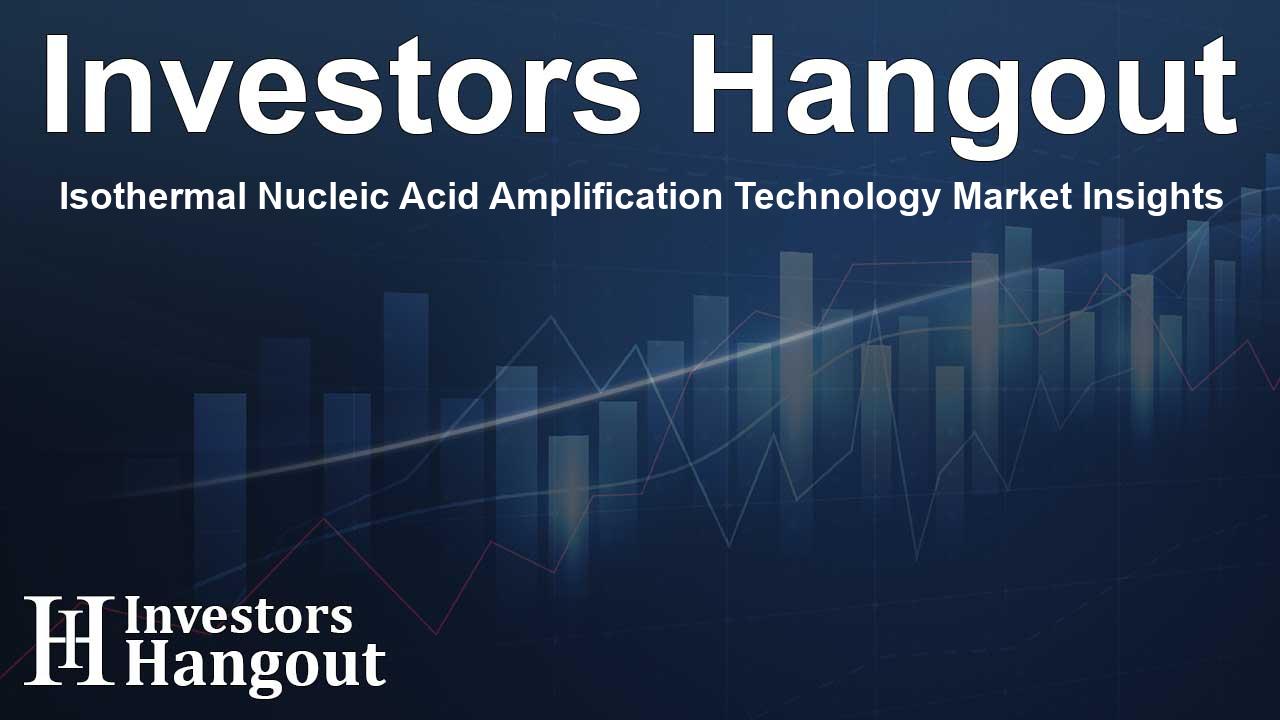Isothermal Nucleic Acid Amplification Technology Market Insights

Isothermal Nucleic Acid Amplification Technology Market Overview
The isothermal nucleic acid amplification technology (INAAT) market has captured significant attention, with a remarkable value of US$ 6.06 billion recognized in recent assessments. Projected to surge to an impressive US$ 17.26 billion by 2033, this market's trajectory represents a robust compound annual growth rate (CAGR) of 12.34%. This growth is largely propelled by the escalating demand for swift and accurate molecular diagnostic solutions.
Key Factors Driving Market Growth
The burgeoning growth of the INAAT market is driven by several influential factors. A primary catalyst is the increasing occurrence of infectious diseases which prompts a heightened need for effective diagnostic technology. Furthermore, advancements in INAAT methodologies have created more efficient solutions, meeting the urgent need for point-of-care testing, particularly in hospitals and healthcare environments, which accounted for approximately 40% of the market share in recent years.
Market Dynamics and Emerging Applications
The trend of utilizing INAAT is witnessing transformative growth, expanding beyond traditional healthcare settings. For instance, in 2023, the number of INAAT-based diagnostic tests conducted exceeded 100 million using leading platforms in the field. Moreover, this technology has gained traction in food safety, with over 5,000 facilities adopting INAAT systems for rapid pathogen detection, ultimately reducing foodborne illnesses significantly.
Investment Trends in INAAT Innovations
The influx of investments into the INAAT sector is noteworthy, with stakeholders recognizing its potential to reshape molecular diagnostics. Despite a general downturn in investment volumes across many industries, INAAT has defied this trend, attracting considerable capital. This phenomenon underpins the promising future investors foresee in this innovative technology, which aligns with growing trends in digital health and personalized medicine.
Breakthrough Technologies in INAAT
Four key technologies—Loop-Mediated Isothermal Amplification (LAMP), Nucleic Acid Sequence-Based Amplification (NASBA), Strand Displacement Amplification (SDA), and Recombinase Polymerase Amplification (RPA)—are leading this market's evolution. LAMP's simplicity has catalyzed over 10,000 research publications in five years, illustrating its wide acceptance and application in diagnosing various infectious agents. RPA, in contrast, has revolutionized point-of-care testing, streamlining rapid diagnostic processes in resource-limited settings.
Diverse Sector Applications of INAAT
INAAT's versatility extends into numerous sectors, such as environmental monitoring and biodefense. Globally, over 10,000 water treatment facilities employ INAAT for real-time microbial contamination monitoring, enhancing public health safety. In agriculture, the technology aids in the early detection of crop pathogens, mitigating potential losses significantly. The biodefense landscape has also integrated INAAT systems, tremendously improving the speed of threat detection.
The Competitive Landscape
The competitive environment within the INAAT market is dynamic, characterized by several influential players, such as Abbott Laboratories and Hologic, who are constantly innovating. Abbott's ID NOW platform is paramount in rapid testing, while Hologic's systems have facilitated significant advancements in sexually transmitted infection diagnostics. Emerging startups are joining established firms, enhancing competition and the variety of INAAT technologies available.
Future Outlook of the Isothermal Nucleic Acid Amplification Technology Market
The future of the INAAT market appears bright, with continuous technological innovations expected to drive further growth. Investments in research and development are projected to witness an upswing, as stakeholders aim to optimize amplification processes and expand their application scopes. With healthcare landscape changes, particularly in response to global health crises, the relevance and necessity of INAAT in diagnostics cannot be overstated.
Frequently Asked Questions
What is the projected value of the INAAT market by 2033?
The INAAT market is projected to reach US$ 17.26 billion by 2033.
What are the primary drivers of this market's growth?
Key drivers include the rising prevalence of infectious diseases, technological advancements, and increased demand for point-of-care diagnostics.
Which sectors have adopted INAAT technology?
INAAT is widely utilized in healthcare, food safety, agriculture, and biodefense, showcasing its diverse applications.
Who are the leading players in the INAAT market?
Notable players include Abbott Laboratories and Hologic, both recognized for their innovative diagnostic solutions.
Why is investment in INAAT rising?
Investors are drawn to INAAT due to its strong potential for revolutionizing molecular diagnostics and addressing pressing healthcare challenges.
About The Author
Contact Caleb Price privately here. Or send an email with ATTN: Caleb Price as the subject to contact@investorshangout.com.
About Investors Hangout
Investors Hangout is a leading online stock forum for financial discussion and learning, offering a wide range of free tools and resources. It draws in traders of all levels, who exchange market knowledge, investigate trading tactics, and keep an eye on industry developments in real time. Featuring financial articles, stock message boards, quotes, charts, company profiles, and live news updates. Through cooperative learning and a wealth of informational resources, it helps users from novices creating their first portfolios to experts honing their techniques. Join Investors Hangout today: https://investorshangout.com/
The content of this article is based on factual, publicly available information and does not represent legal, financial, or investment advice. Investors Hangout does not offer financial advice, and the author is not a licensed financial advisor. Consult a qualified advisor before making any financial or investment decisions based on this article. This article should not be considered advice to purchase, sell, or hold any securities or other investments. If any of the material provided here is inaccurate, please contact us for corrections.
